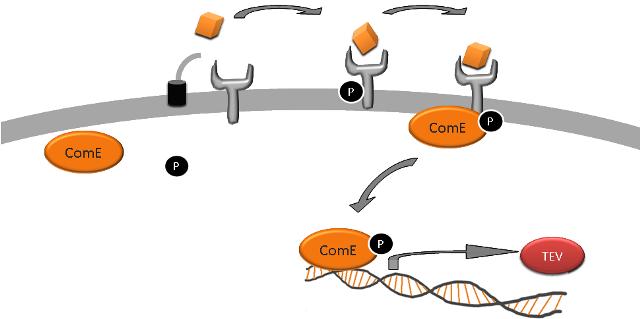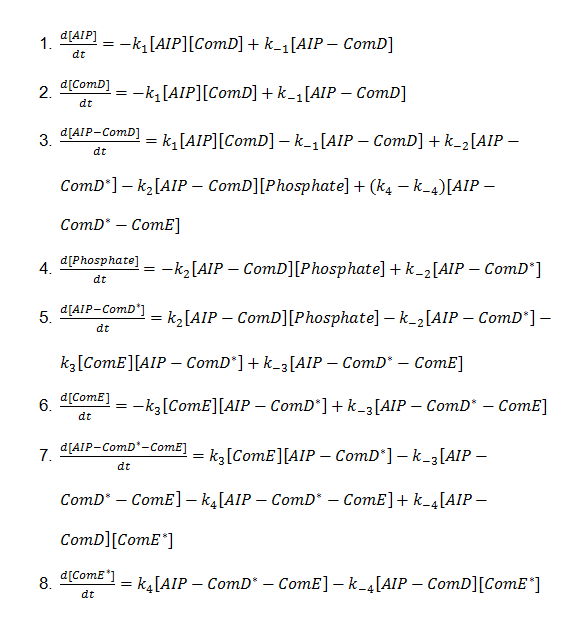| Detailed Description
|
| We are assuming steady-state for AIP, Phosphate, ComD and ComE in our cell/in the solution. Hence, we can neglect production and degradation rates of ComD and ComE.
|

|
| Overview of the signalling module
|
|
| Equation 1: AIP binds to ComD receptor to form a complex (AIP-ComD)
|
| AIP + ComD ↔ AIP-ComD
|
| Equation 2: Phosphate binds to the AIP-ComD complex to form another complex (AIP-ComD*)
|
| AIP-ComD + Phosphate ↔ AIP-ComD*
|
| Equation 3: ComE binds to the AIP-ComD* recepetor to form another complex (AIP-ComD*-ComE)
|
| AIP-ComD* + ComE ↔ AIP-ComD*-ComE
|
| Equation 4: Phosphate group on ComD binds to ComE and forms two products: phosphorylated ComE (ComE*) and AIP-ComD
|
| AIP-ComD*-ComE ↔ AIP-ComD + ComE*
|
| Using the Law of Mass Action, we can rewrite these 4 equations:
|

|
| In the above equations, the forwards reaction constants are represented by k1,2,3,4, for the first, second, third and fourth reaction, respectively. The backwards reaction constants are represented by k-1,-2,-3,-4.
|
 "
"





